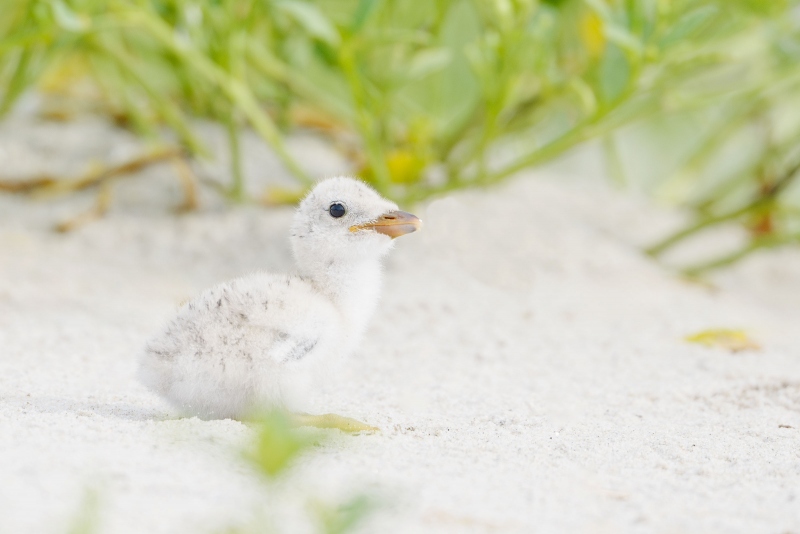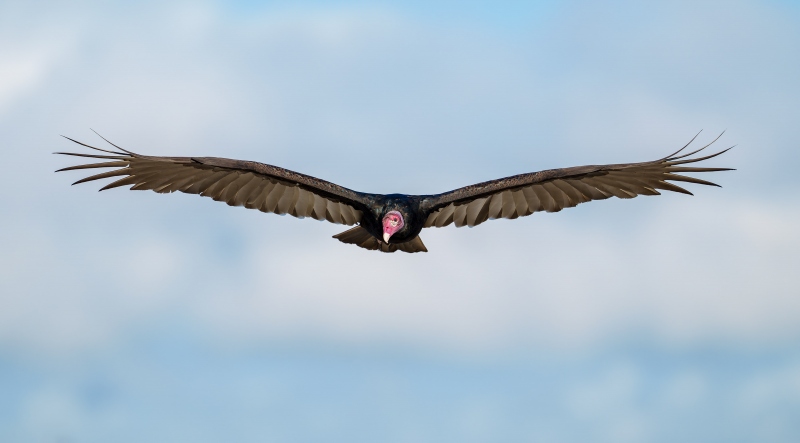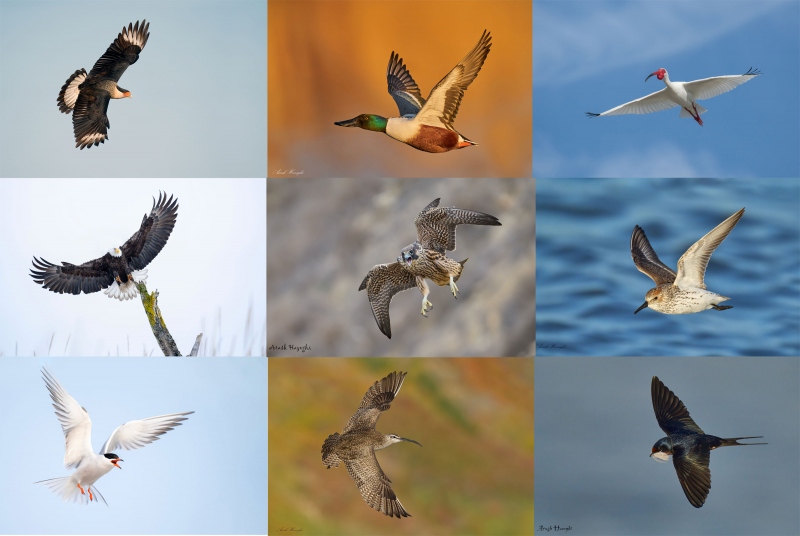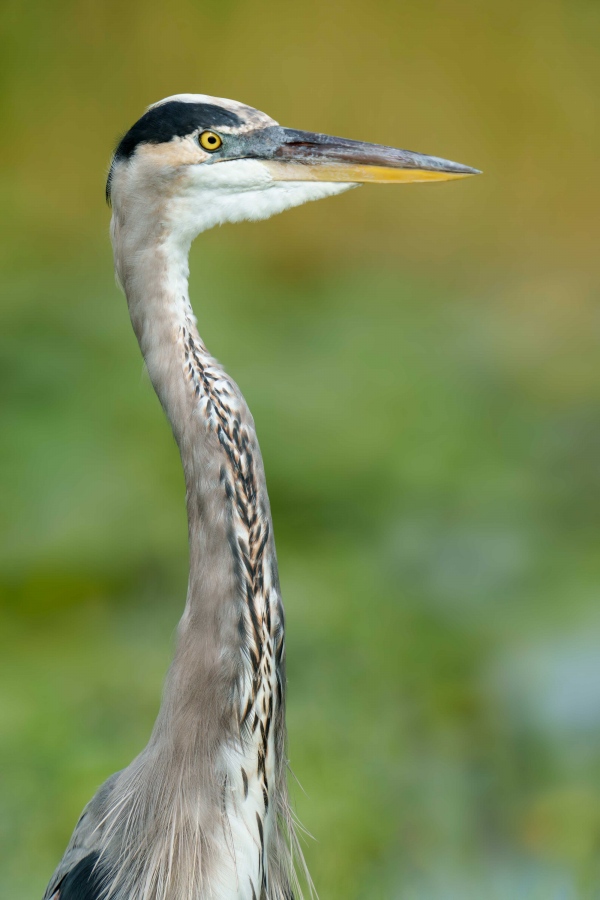Pat Fishburne
Pat visited ILE in June for a day of private Sony instruction. She used both my a1 and my a9 iii and decided to go with the a9 iii because of the better autofocus system and the smaller file sizes. You can read the whole story and see two of the great images she made with the 300mm f/2.8/2X TC/a9 iii rig hand held in the
Hard to Believe. A New Record: 86 Years Young!
blog post here.. More proof that you are never too old to switch to Sony.
Your Call?
All are invited to pick their three favorite Pat Fishburne Nickerson Beach images and list them with the best one first. Again, this will be a tough chore. Kind folks will let us know why they made their choices. (Note: all of the image optimizations were done by yours truly, Arthur Morris/BIRDS AS ART.
a9 iii E-mail Set-up and Info Guide |
a9 iii E-mail Set-up and Info Guide
For those who think that my comments on the a9 iii are pure hype, know that I recently sold the second of my three a1 bodies.
If you plan on purchasing a Sony a9 III Mirrorless Camera (or anything else for that matter), please remember to use or write for either my Bedfords discount code or my B&H affiliate link. Folks who use one of my two affiliate links to purchase the a9 III will receive my .DAT settings (the complete camera set-up), a Buttons and Dials Guide, and an a9 iii Info Sheet.
|
|
|
For those who did not use my link to purchase their Sony 300mm f/2.8 GM lens, you can order your a copy here for $209.93. Click on the image to enlarge and to be able to read the fine print. |
The BAA Sony 300mm f/2.8 Lens Guide
Impressed by my (or Pat’s) Sony FE 300mm f/2.8 GM OSS Lens (Sony E) images? Use either my Bedfords or B&H affiliate link to purchase your Sony 300mm f/2.8 GM lens and shoot me your receipt via e-mail and request a copy of the first-ever BAA Lens Guide. I thought that it would take only minutes to create this guide, but I was dead wrong. In the process of creating it, I learned a ton about the lens. And even better, I discovered a simple yet potentially fatal flaw that was resulting in sporadically unsharp flight images. The set-up fix is simple. Just be sure to use one of my affiliate links and get the guide for free.
If not, you can purchase a copy here for $209.93. Yes, it never hurts to use my links and it never costs you one penny more. And if you contact me via e-mail before you make a major purchase, I can often save you some money.
What’s Up?
The thumb incision is healed perfectly and the tenderness on the inside of my right ring finger is decreasing slowly but steadily. I’ve been back in the pool the last two days. And I’ve made great progress on my 2023 tax return.
I’ve been photographing a variety of subjects every morning down by the lake with varying degrees of success. I continue to work with my new a-1 body, the one with Firmware 2.01. I’ve learned a ton and will soon be moving to 2.02. The a-1 group will be hearing from me within the next two weeks as preparing three new .DAT file and the Buttons and Dials/My Menu guides will take lots of time and effort.
In the Rating Three Pretty-Close-to-Perfect Images blog post here, Images #1 and #2 tied for first while Image #3, though technically perfect was my third and last choice.
Today is Sunday 15 September 2024 and yes, I will be heading down to the lake soon to see what I see and learn what I can learn. Whatever you are doing, I hope that you too choose to have fun and to enjoy life.
Please remember to use the B&H links that are found on most blog pages and to use the BIRDSASART discount code at checkout when purchasing your new gear from Bedfords to get 3% back on your credit card and enjoy free second-day air FedEx. Please, also, consider joining a BAA IPT. You will be amazed at how much you will learn!
If an item — a Delkin flash card, or a tripod head — for example, that is available from B&H and/or Bedfords, is also available in the BAA Online Store, it would be great, and greatly appreciated, if you would opt to purchase from us. We will match any price. Please remember also to use my B&H affiliate links or to earn 3% cash back at Bedfords by using the BIRDSASART discount code at checkout for your major gear purchases. Doing either often earns you free guides and/or discounts. And always earns my great appreciation.
Supporting My Efforts Here
If you enjoy and learn from the blog, are all set for gear, or live overseas, consider leaving a Thank You gift here.
If you enjoy and learn from the blog, please consider using one of my affiliate links when purchasing new gear. It will never cost you a single penny. To support my effort here, please order from B&H by beginning your search here. Or, click here, to order from Bedfords and enter the discount code BIRDSASART at checkout to receive 3% cash back to your credit card and enjoy free Second-Day Air Fed-Ex shipping. It is always best to write for advice via e-mail.
In many cases, I can help you save some serious dollars. And/or prevent you from purchasing the wrong gear.
|
|
|
This image was created on 2 August 2024 by 86-year old Pat Fishburne on the second Nickerson Beach Extended IPT. Standing at full height she used the hand held Sony FE 70-200mm f/2.8 GM OSS II lens with the Sony FE 2x teleconverter (zoomed out to 140mm), and the ridiculously amazing Sony a9 III Mirrorless Camera. The exposure was determined via Zebra with ISO on the Thumb Dial. ISO 5000: 1/1000 sec. at f/5.6 (wide open) in Manual mode. AWB at 6:28:38pm on a very cloudy afternoon. Tracking: Expand Spot (moved to the lower center) AF/C with Bird-Eye/Face Detection performed perfectly. Click on the image to enjoy a high-res version. Bird-scape: Black Skimmers and Common Terns on the beach |
What Pat Learned on the First Afternoon
1- When creating bird-scapes, you always want to focus on the closest bird.
2- When working with very small in the frame subject’s, it is better to move the AF point to the bottom of the frame than to begin with the point in the center and rely on the tracking to hold.
3- She learned to watch the edges when creating bird-scapes.
|
|
|
This image was created on 3 August 2024 by 86-year old Pat Fishburne on the second Nickerson Beach Extended IPT. Seated on dry sand, she used the knee-pod technique with the hand held Sony FE 300mm f/2.8 GM OSS Lens (Sony E) with the Sony FE 2x teleconverter (zoomed out to 140mm), and the ridiculously amazing Sony a9 III Mirrorless Camera. The exposure was determined via Zebra technology with ISO on the Thumb Dial. ISO 1600: 1/2000 sec. at f/5.6 (wide open) in Manual mode. AWB at 8:39:37am on a sunny morning. Tracking: Expand Spot AF/C with Bird-Eye/Face Detection performed perfectly. Click on the image to enjoy a high-res version. Image #2: Black Skimmer chick about one week old |
What Pat Learned on the First Morning
1- When you know that you are going to need to crop, use the center AF point as it is generally just a bit more consistent than if you had moved it out of the middle.
2- Sharp a9 iii images can stand up to healthy crops a lot better than most folks assume.
3- It always pays to keep your eye on the head angle.
|
|
|
This image was also created on 5 August by 86-year old Pat Fishburne on the second Nickerson Beach Extended IPT. Seated on dry sand using the knee–pod technique, she used the hand held Sony FE 300mm f/2.8 GM OSS Lens (Sony E) with the Sony FE 1.4x Teleconverter and the ridiculously amazing Sony a9 III Mirrorless Camera. The exposure was determined via Zebra technology with ISO on the Thumb Dial. ISO 1600: 1/1600 sec. at f/4 (wide open) in Manual mode. When evaluated in RawDigger, the raw file brightness was determined to be perfect. AWB at 7:09:42pm on a typical — some clouds on the western horizon — late afternoon at Nickerson. Tracking Zone/AF-C with Bird Face/Eye detection enabled performed to perfection. Be sure to click on the image to enjoy the high-res version. Image #3: Black Skimmer adult standing in colony |
What Pat Learned on the Second Afternoon
1- Working in Manual mode is best for 90% of bird photography as the background tonalities change as you recompose.
2- Tracking: Zone AF-C is generally best when photographing birds on the ground as it will grab the eye and enable you to recompose while sticking on the eye.
|
|
|
This image was created on 5 August 2024 by 86-year old Pat Fishburne on the second Nickerson Beach Extended IPT. Again seated on dry sand, she used the knee-pod technique with the hand held Sony FE 300mm f/2.8 GM OSS Lens (Sony E) with the Sony FE 2x teleconverter and the ridiculously amazing Sony a9 III Mirrorless Camera. The exposure was determined via Zebra technology with Exposure Compensation on the Thumb Dial. Multi-metering +2 stops in Shutter Priority mode. AUTO ISO set ISO 2000: 1/250 sec. at f/5.6 (wide open) in Manual mode. AWB at 6:01:40am early on a very hazy morning. Tracking: (lower right) Zone AF/C with Bird-Eye/Face Detection performed perfectly. Click on the image to enjoy a high-res version. Image #4: Adult and young Great Black-backed Gull at sunrise |
What Pat Taught artie on the Third Morning
1- I learned that on muted sunrises (and sunsets) that you do not have to get super low at 600mm to include the sun in the frame!
What Pat Learned on the Third Morning
1- In extreme low light conditions with uniformly light toned backgrounds and predawn or cloudy conditions, Shutter Priority with AUTO ISO and Exposure Compensation can be best.
2- Adding two stops of light in such conditions will almost always get you into the ballpark.
3- You can move the Zone AF brackets around the frame (using the Joystick) to render your AF system more efficient.
|
|
|
This image was also created on 5 August 2024 by 86-year old Pat Fishburne on the second Nickerson Beach Extended IPT. Again seated on dry sand, she used the hand held Sony FE 300mm f/2.8 GM OSS Lens (Sony E) with the Sony FE 2x teleconverter (zoomed out to 140mm), and the ridiculously amazing Sony a9 III Mirrorless Camera. The exposure was determined via Zebra technology with Exposure Compensation on the Thumb Dial. Multi-metering +1 stop in Shutter Priority mode. AUTO ISO set ISO 320: 1/2500 sec. at f/5.6 (wide open) in Manual mode. AWB at 6:16:55am on a hazy morning. Zone AF/C with Bird-Eye/Face Detection performed perfectly. Click on the image to enjoy a high-res version. Image #5: Black Skimmer backlit in flight against colorful sunrise |
What Else Pat Learned on the Third Morning
1- If you are working in Shutter Priority Mode at +2 EC in low light, and the muted sun lights up the sky as it rises, lower the EC to +1 so that you will not overexpose the brightest areas of the sky.
2- A west wind in the morning will be poor for traditional flight photography once the sun breaks through the haze, but it is perfect for creating flight silhouettes if you get some early sky color.
|
|
|
This image was also created on 5 August 2024 by 86-year old Pat Fishburne on the second Nickerson Beach Extended IPT. Seated on dry sand, she used the hand held Sony FE 300mm f/2.8 GM OSS Lens (Sony E) with the Sony FE 2x teleconverter (zoomed out to 140mm), and the ridiculously amazing Sony a9 III Mirrorless Camera. The exposure was determined via Zebra technology with ISO on the Thumb Dial. ISO 1600: 1/2000 sec. at f/5.6 (wide open) in Manual mode. AWB at 8:39:37am on a sunny morning. Tracking: Zone AF/C with Bird-Eye/Face Detection performed perfectly. Click on the image to enjoy a high-res version. Image #6: Common Tern — adult with Atlantic Silversides (spearing) fish for chick |
What artie Learned on the Third Morning
1- He learned that he is right when he says, “Relative beginners using today’s great mirrorless gear with their cameras set up properly and just a bit of instruction can — on occasion, make better photos than the seasoned professional sitting right next to them.” Well done, Pat!
What Pat Learned on the Third Morning
1- That using Tracking Zone with the brackets in the center and the bird on the ground can be used to create perfectly designed images by acquiring focus and then re-composing by moving the lens if and as needed. (Note that there is four times as much room from the tip of the bill to the frame edge than there is from the tip of the tail to the frame edge — The Mike DeRosa Rule).
|
|
|
This image was also created on 5 August by 86-year old Pat Fishburne on the second Nickerson Beach Extended IPT. Seated on dry sand using the knee–pod technique, she used the hand held Sony FE 300mm f/2.8 GM OSS Lens (Sony E) with the Sony FE 1.4x Teleconverter and the ridiculously amazing Sony a9 III Mirrorless Camera. The exposure was determined via Zebra technology with ISO on the Thumb Dial. ISO 3200: 1/800 sec. at f/4 (wide open) in Manual mode. When evaluated in RawDigger, the raw file brightness was determined to be perfect. AWB at 7:28:04pm on a typical — some clouds on the western horizon — late afternoon at Nickerson. Tracking Zone/AF-C with Bird Face/Eye detection enabled performed to perfection. Be sure to click on the image to enjoy the high-res version. Image #7: American Oystercatcher juvenile preening |
What Pat Learned on the Fourth Afternoon
1- Proper head angle is dependent on the pose. (Ten degrees towards is perfect for this image.)
2- If you’ve got a good horse ride it. (On each IPT, we spent many hours photographing the un-banded family of four.)
|
|
|
This image was also created on 5 August by 86-year old Pat Fishburne on the second Nickerson Beach Extended IPT. Seated on dry sand, she used the hand held Sony FE 300mm f/2.8 GM OSS Lens (Sony E) with the Sony FE 1.4x Teleconverter and the ridiculously amazing Sony a9 III Mirrorless Camera. The exposure was determined via Zebra technology with ISO on the Thumb Dial. ISO 3200: 1/250 sec. at f/5.6 (stopped down one stop in error) in Manual mode. When evaluated in RawDigger, the raw file brightness was determined to be dead solid perfect. AWB at 7:55:59pm on a typical — some clouds on the western horizon — late afternoon at Nickerson. Tracking Zone/AF-C with Bird Face/Eye detection enabled performed to perfection. Be sure to click on the image to enjoy the high-res version. Image #8: Common Tern — adult with fish for chick on snow fence at sunset |
What Else Pat Learned on the Fourth Afternoon
1- That she did not need to be right next to me to create excellent images. (She wandered off by herself to look for a tern on the snow fence, found just what she was looking for, and created a wonderful image all on her own. She was justifiably very proud of herself. As was I of her.)
2- That as long as you employ good sharpness techniques you do not always need to be at 1/2000 or 1/1000 sec. in order to create sharp images.
|
|
|
This image was created on 6 August by 86-year old Pat Fishburne on the second Nickerson Beach Extended IPT. Standing at full height, she used the hand held Sony FE 300mm f/2.8 GM OSS Lens (Sony E) with the Sony FE 1.4x Teleconverter and the ridiculously amazing Sony a9 III Mirrorless Camera. The exposure was determined via Zebra technology with ISO on the Thumb Dial. ISO 3200: 1/3200 sec. at f/4.5 (stopped down 1/3 stop) in Manual mode. When evaluated in RawDigger, the raw file brightness was determined to be perfect. AWB at 7:47:16am on a cloudy morning. Zone/AF-C with Bird Face/Eye detection enabled performed to perfection. Be sure to click on the image to enjoy the high-res version. Image #9: Black Skimmer — adult in flight with fish for chick |
What Pat Learned on the Fourth Morning
1- In cloudy conditions you do not have to worry about sun angle as long as there are no shadows. The important thing is to keep the wind somewhere behind you so that the birds are at least angling toward you.
2- In white sky conditions you must expose far to the right to avoid underexposing the subject. especially those with some dark or black feathers.
Typos
With all blog posts, feel free to e-mail or to leave a comment regarding any typos or errors.



































